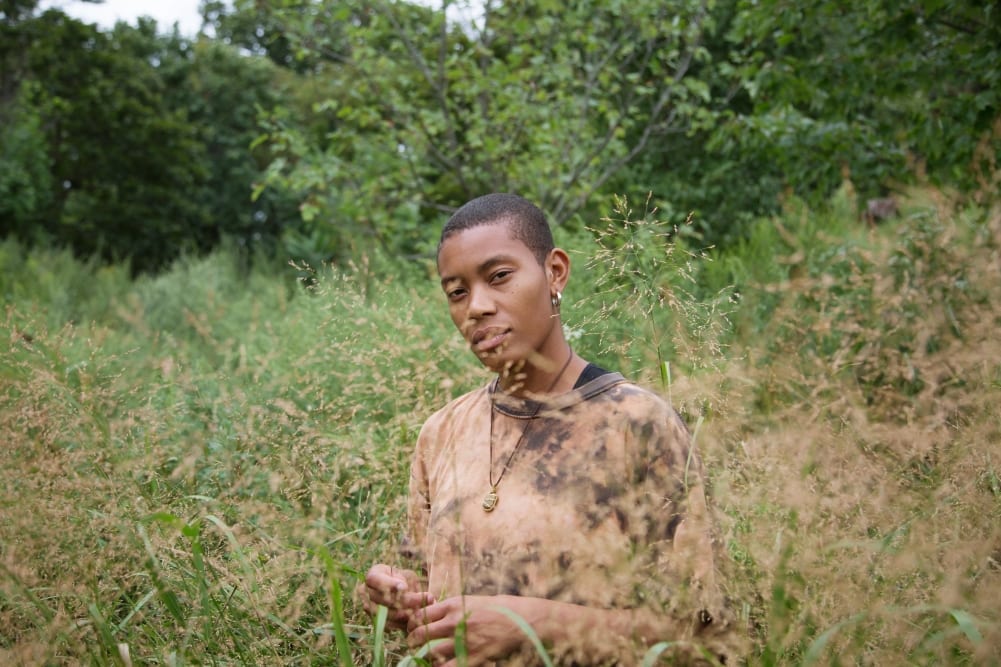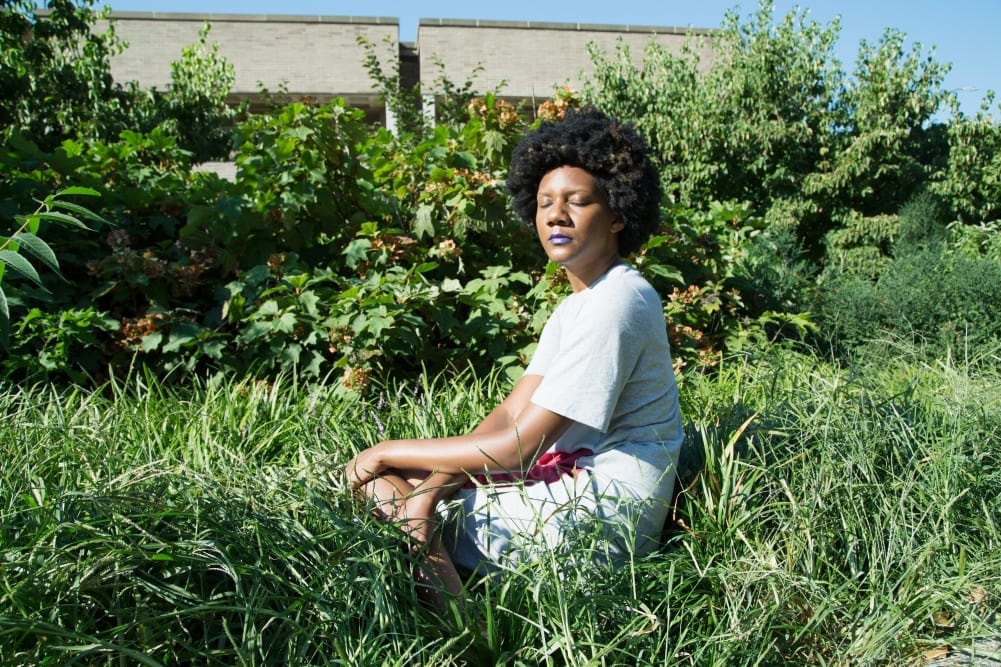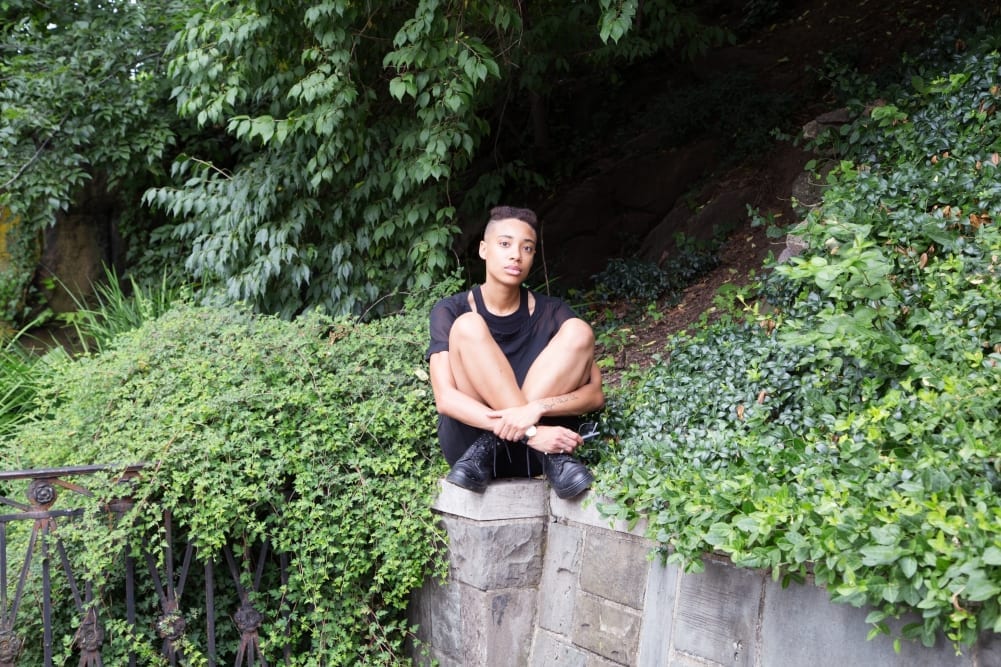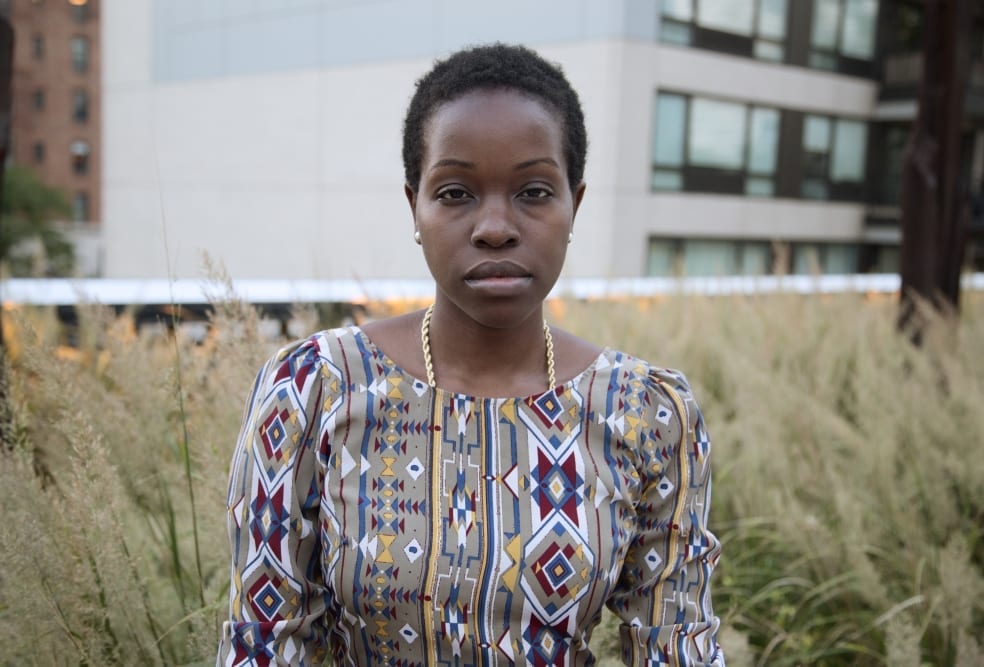Photographer Naima Green is an artist whose images I return to often. They are potent. They are vulnerable. As a viewer, I want to stay with them, linger a little while longer. Naima and I have known one another for about two years now, and in many ways, the conversation that follows is an extension of the ongoing conversation we began long ago about photography, blackness, and her beautiful series, Jewels from the Hinterland. Specifically, we think through the nuances of image making in the digital age, the importance of archives, and what it means to come into moments of creative clarity.

JL: What does it mean to make images in this era? I feel as if there are a myriad of opinions: It’s great. It democratizes subjectivities. Then, on the other hand, there is a formal concern: What does it do to the mechanics of the craft and how might that affect one’s professional ability to be selected by curators or receive critical attention? It’s always fascinating to talk with you about this notion of protection and privacy. Clearly, you are a collaborator, but I wonder if you feel like there is something to be gained from this insistence of a kind of privacy around your work. Or, do you feel that you are missing out because you don’t present on social media in the way other photographers may present?
NG: It’s partly related to my personality. My private life is so important to me. I can’t just give an image away to the first person who wants to see it. But I have been thinking a lot about vulnerability as an act of generosity. When thinking about my own privacy and image, the photographs I make picture me without my physical presence in the picture. I’m still sharing myself because I’m sharing my ideas. Though, I never want to be the center of attention. That’s not why I’m making the work. I’m making the work so that the subject is seen in a way that they feel proud of.
JL: In thinking about archives, histories, and their plural existence, Instagram, in particular for a photographer, could be argued to be its own kind of archive or repository. Yet, you don’t own those images once you agree to the terms of engagement.
NG: It’s insane that someone else can own your memories.
JL: The internet is an open source entity. It can bring a lot of good, but the creation of such an archive via a third party brings up conversations about labor and authorship that have always loomed over black cultural producers, in particular. In this moment, as you are building an archive that exists in your studio space, when you choose to share or translate that to Instagram, we are met with a simultaneity. There is one history that can be interacted with on terms that are not set by you really, and then, there is this other space whose terms are always decided by you. You are the person deciding who gets to engage with those images. You are the person deciding when and how they will be shared. That duality is fascinating to me. How does one navigate that duality?
NG: More and more, I’m treating Instagram like a mood board. I’m not afraid to delete things and take them away. What’s great is that people feel as if they know you through social media but in fact I’m curating an experience for them. What I find problematic is when people feel like my Instagram feed embodies who I am. We still need to be able to have conversations and look at each other and talk to one another. Printing out all of the images from Jewels—I’ve never seen the work altogether—is something I would never put on Instagram because it’s something that is personal and something that I am still working through. There are some processes I don’t mind sharing and then there are others that I prefer to spend more time with. So, you’re absolutely right. We are creating archives. But what happens to the posts you delete or the things you don’t want to remember or talk about visually anymore?

JL: There are also instances where artists have created work, not received acknowledgment in real time, and then, their work is left in silence for ten, twenty, thirty years, without a steward. Regardless of how well the artist tried to keep their body of work together, if they die in obscurity …
NG: It’s no longer your story to tell.
JL: Whoever finds it, can manipulate the archive.
NG: Or, whoever buys the archives, mediates the story. Think about Vivian Maier’s archive, for example. The story becomes equally about the discoverer. And you know, in this instance, he is taking care of the work and I’m glad for that, but he now becomes part of her story.
JL: During Black Art Incubator this summer, one of our first workshops was with Sur Rodney Sur, Lorraine O’Grady’s lead archivist. Lorraine is very much in control of her story. If you’re going to write about Lorraine, you have to go through Lorraine first. I appreciate that. It’s an insistence. You’re also insisting on being insistent so that your images aren’t found in a box years down the line and subject to someone re-narrating you. So maybe, even with the tensions surrounding what it means to image in the era of the internet, a small part of me is willing to give these social platforms a pass because they offer, to a certain extent, individuals the opportunity to be named. It doesn’t excuse all of the other problems that come with the platforms though.
NG: Certainly, but they are really important in the way you describe. As I was saying to André Wagner, a friend and fellow photographer, we get found in these spaces by a variety of people. I did a bunch of corporate head shots two weeks ago, and then I shot the opening party for The Wing. Even this show (Her Fee Planted Firmly on the Ground at HCP)! It definitely broadens reach.
JL: Let’s switch gears slightly. How are you feeling about Jewels now? I ask you this all the time but it’s the question I’m compelled to ask. You’ve compiled these stunning images, and now you are in the place where you are ready to think about and see them as a unit. What are you hoping to feel once you have them on the wall staring back at you?
NG: What I hope to get is a sense of completion. I’m hoping that the complexity and nuance that I’ve been striving for comes across. In a recent crit, I showed our images and they were the four that I happened to have printed, but they were all very similar. And during the crit, someone said to me that it felt like I had taken one really structured idea and swapped it for another really structured idea.
JL: The structured idea being what?
NG: They felt like the subjects could have been interchangeable based on how the photographs looked, and in those four images I do understand that comment. I wouldn’t normally sequence them next to one another, but I think that feedback was important for me to hear. It’s been helpful to see the work with fresh eyes. I’m really excited to put all of the images up to start arranging and rearranging, making sure that I’m staying true to the nuance that I’m so adamant about.

JL: Whenever I think about this project, as much as I love its response to the flaws of twentieth century urban planning, I also think about who has been involved. There is so much vibrancy in black New York right now even as there is a tremendous amount of pain and anguish. There are so many convergences that are happening within this project. There are activists, writers, poets, and other visual artists. When I think about how we will name this time—“young, black New York”—I can imagine Jewels serving as a reference point from which we might gather a visual language at least. “Young, black New York” in different historical epochs has been such a bloodline for the city. You are capturing that in this time. And, I’ve never said this aloud, but that’s what rises to the top for me. It’s a mapping of sorts and that feels like an urgent subtext of this work.
NG: The mapping is really important to me. I’m trying to figure out how to show those intersections. It’s a mapping of place—where the images are physically occurring—but also a mapping of this time as you said. I’ll be with different groups of people and someone who maybe hasn’t met someone before will say ,“oh yeah, I’ve seen your picture; I know you.” We’re becoming familiar with one another by seeing one another. No, it doesn’t mean that we know each other, but we know ofone another and what they are contributing to the culture. In a way, the project is about the creation of an alternative present. That is the beauty of loving and living in this world of photography. I have the opportunity to create the world that I know to be true, and what several other people know to be true as well.
JL: What excites me most as someone who is invested in critical conversations about photography is that I know it’s not just you. There is a cadre of photographers of color who are doing this work, inscribing our stories visually in new ways and we are the beneficiaries of a history that, to a certain extent, has and is being reckoned with. There are scholars, like bell hooks, who have been writing about what it means to image make, and produce, and we can pick that up, from both a formal and theoretical standpoint, and fashion something from that. We can sit, ponder, and respond to these many gestures.
NG: That’s why I spend so much time thinking about my collaborators as I image-make. I don’t want this project to be a classist endeavor. It’s hard because everyone comes from very different socioeconomic backgrounds. Still, the people that I work with have the time to think through the ideas, sit down, and work with me. So, I’m thinking about who has time for leisure.
JL: I’ve wondered if class has come up for you before. Given how you approach image- making, taking into consideration the newly found photographs of your own family , even; when conversations about class have come up, what have they been like?
NG: You know, I haven’t had a ton of conversations about class. It’s mainly been personal thinking. For me, it’s two fold. My network is my network. These are the people I have access to. They are people I can email. I don’t want to insert myself into a culture or world that isn’t my own, but I also want to figure out a way to approach new people. I really do want to think about how I can create a more in-depth picture of blackness beyond just black middle-class creatives. But again, maybe it’s not my role to document that. It’s not something that will be reconciled with Jewels, but it’s top of mind.

JL: I don’t think it has to be reconciled with this very project, but to be actively negotiating it is important. In a city like New York, the class gradients are often extremely legible. And, as we have been saying, capturing images that are able to offer up a new truth, or, a wider truth feel urgent now.
NG: It’s the power of the everyday. There’s someone who I really want to work with and I don’t know if I will but Deana Lawson has the ability to do this with her photography. It’s about trust, isn’t it? To allow someone to look at you or to do the looking.
JL: I couldn’t agree more. I immediately think of her Untitled (Snapshot) series that tells the story of a young family’s experience with incarceration. Each snapshot is the couple in front of the same wall, visitation photographs, taken each time the young woman and child come to visit the man. For a lot of people, there is nothing spectacular about this familiar scene, and yet, Lawson manages to find the spectacular. The images are breathtaking. They could be people you know, and yet, here is so much universality in them, a universality of family and love that are often not ascribed to people in that situation.
NG: It’s about seeing the importance of all different type of stories. Where one person might consider that narrative to be mundane, that is his life. LaToya Ruby Frazier works in a similar way with her photographs of Braddock,Pennsylvania. There is a clarity of vision that both women have. I feel connected to that. Even if I get stuck or at times can be too strict with myself, I’m glad I know what I’m going for ,and moving forward, the intention remains, but I’m going to be more flexible and not get caught up in the seriality of things. When I was teaching, I would always tell my students that process can be its own end. I haven’t always allowed that of myself. I want to learn how to better feel my way through this work rather than always think my way through it.


